
by Vinergy Vietnam | Jul 7, 2024 | Uncategorized
Energy audits for businesses are a powerful yet underutilized tool in Vietnam’s competitive market. If you’ve ever questioned whether your enterprise is operating at peak efficiency, an energy audit could be the key to unlocking substantial savings and improved performance. Let’s explore the process and benefits of energy audits in Vietnam in the article below!
What is an Energy Audit?
An energy audit is a systematic assessment of energy use within a building or facility. It aims to identify how and where energy is being consumed, detect areas of energy waste or inefficiency, and recommend cost-effective measures to improve energy efficiency.
The ultimate goal is to identify consumption leakages, reduce energy consumption, lower utility costs, and decrease the building’s environmental impact. Energy audits can be performed on residential, commercial, or industrial properties, providing valuable insights for property owners and managers to make informed decisions about energy-saving or efficiency improvements.
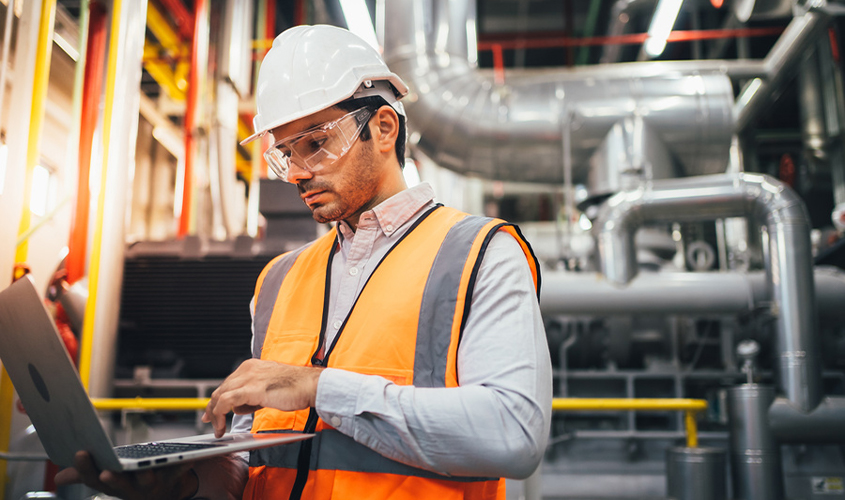
Types of Energy Audits
For businesses in Vietnam that own their buildings, professional energy audits can be a valuable tool for improving energy efficiency. According to Energy Star, there are several types of energy audits, each offering different levels of detail in surveying your property:
- Level I – Walk-Through Analysis focuses on low and no-cost energy conservation measures and provides a list of higher-cost energy conservation opportunities. This type of audit typically results in a report detailing potential energy and cost savings from specific efficiency improvements. It’s suitable for businesses looking for quick, easily implementable solutions to reduce energy consumption and costs.
- Level II – Energy Survey and Analysis includes more detailed energy calculations and financial analysis of proposed efficiency measures. It utilizes life cycle analysis to better illustrate the long-term financial benefits of energy efficiency upgrades. This audit provides a comprehensive list of energy conservation/efficiency measures, estimates of energy and cost savings for each measure, and cost estimates for implementing each measure. It also includes recommendations for necessary changes to operations and maintenance procedures. Level II audits are ideal for businesses ready to make more significant investments in energy efficiency.
- 3. Level III – Detailed Analysis of Capital-Intensive Modifications builds upon the previous levels with a focus on specific, complex energy conservation/efficiency measures. This may involve the refinement of energy models or more extensive data collection and analysis. Level III audits are typically used for large-scale or high-cost energy efficiency projects and are suitable for businesses planning major renovations or considering substantial energy system overhauls.

The Energy Audit Process
The energy audit process applied in Vietnam is typically flexible and adaptable, varying depending on the scope of the proposed audit, as well as the size and type of equipment to be audited. The audit follows these steps:
- Step 1: The audit team develops a detailed plan, establishing audit objectives, dividing the facility into functional areas or cost centers, selecting team members, assigning responsibilities, and listing equipment for inspection.
- Step 2: Auditors conduct an initial walkthrough of the facility, observing production lines and equipment in operation to gain a general understanding of energy consumption patterns.
- Step 3: Basic production and energy consumption data is gathered from various departments or cost centers. Standard forms and worksheets are used to collect information such as utility bills, production records, and annual energy consumption figures.
- Step 4: The team performs tests to collect additional data on equipment performance and specific production areas. In some cases, this may involve setting up measurement points or monitoring stations.
- Step 5: Auditors analyze the collected data to determine energy balances and calculate efficiency metrics for various systems and processes.
- Step 6: The audit team identifies areas where energy management practices can be improved and assesses the potential for energy savings.
- Step 7: Auditors evaluate current operational and maintenance procedures, identifying potential energy-saving measures and assigning responsibilities for implementation.
- Step 8: The team identifies and evaluates low-cost energy-saving measures, estimating implementation costs and potential energy savings. This step includes planning for financial investments and clearly defining responsibilities and timelines.
- Step 9: Larger energy-saving projects are assessed, with costs and potential savings calculated. Detailed implementation plans are prepared for solutions with acceptable payback periods.
- Step 10: A comprehensive report is compiled for facility management, summarizing findings and recommendations. This includes all collected data, analysis methods used, and suggestions for energy efficiency improvements based on the audit results. The report also outlines a clear action plan for implementation.
Benefits of Energy Audits for Businesses in Vietnam
1. Reduced Energy Expenses
The primary advantage of energy audits is significant cost savings. Energy audits help Vietnamese businesses identify and eliminate energy waste, leading to significant cost savings. This is particularly important in Vietnam, where energy demand is rapidly increasing. These audits can reveal opportunities for optimizing equipment usage and upgrading to energy-efficient technologies.
While specific savings can vary greatly depending on the business and measures implemented, many companies report significant reductions in energy consumption after conducting audits and following recommendations.

2. Identify Equipment Problems
Audits can uncover issues with equipment performance or maintenance that may be causing energy waste. Moreover, energy audits often reveal outdated or inefficient equipment that may be consuming excessive energy. Early detection of these problems allows for timely repairs or replacements, preventing costly breakdowns and improving overall operational efficiency.
Auditors can also detect dangerous health risks such as carbon monoxide emitted from malfunctioning equipment. Regular energy audits help identify potential health hazards, allowing businesses to address these issues promptly and ensure staff safety.
3. Personalized Recommendations for Your Business
Energy audits provide tailored suggestions based on specific business operations, facilities, and energy usage patterns. According to the Vietnam National Energy Efficiency Programme (VNEEP), energy audits in industrial sectors have led to significant energy savings.
To achieve this, auditors consider factors such as building layout, equipment usage, and operational patterns. Recommendations are prioritized based on potential impact and feasibility for implementation. As a result, businesses receive a roadmap for energy efficiency improvements aligned with their goals and budget. Ultimately, custom strategies ensure optimal results and return on investment for energy-saving initiatives.
4. Increased Property Value
Implementing energy-efficient upgrades based on energy audit recommendations can significantly enhance your property’s value. Investments in technologies like solar panels, high-efficiency LED lighting, and weatherization not only reduce energy consumption but also boost market appeal.
This “green” approach aligns with current real estate trends, as evidenced by studies on ENERGY STAR certified buildings. Such properties enjoy notable financial benefits, including approximately 3% higher rental rates, improved occupancy levels, and a substantial 16% premium in selling price. Therefore, allocating a budget towards energy efficiency improvements is a strategic decision that can yield both immediate savings and long-term financial gains in the competitive real estate market.
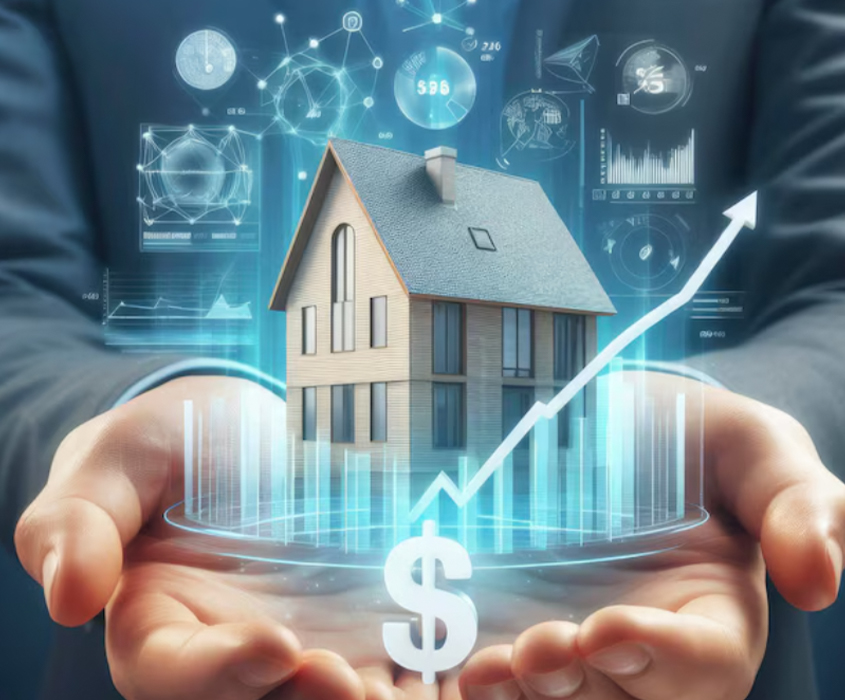
5. Longer Equipment Lifespan
Upgrading equipment based on energy audit recommendations offers multiple benefits for businesses. Modern, energy-efficient units not only reduce energy costs but also tend to have longer lifespans due to their optimized performance. These newer models operate more efficiently, reducing strain and wear compared to older, less efficient equipment.
Consequently, Vietnamese businesses can expect extended equipment durability, leading to fewer replacements and lower long-term capital expenditures. This approach maximizes return on investment in machinery and technology while enhancing operational stability.
Challenges and Considerations in Implementing Energy Audits
Implementing energy audits in Vietnamese businesses faces numerous significant challenges. One of the main barriers is the lack of awareness about the importance and benefits of energy auditing. Many businesses, especially small and medium-sized enterprises, often view this as an unnecessary expense rather than a long-term investment. Additionally, the shortage of qualified and experienced energy auditors in Vietnam is also a major obstacle. This can lead to inaccurate or incomplete audit results, reducing the effectiveness of the process.
Another challenge is the complexity of the energy auditing process, which requires close cooperation between various departments within the business. Collecting accurate and comprehensive data on energy consumption can be difficult, especially when many businesses lack efficient energy monitoring systems. Moreover, implementing recommendations from energy audit reports requires financial investment and changes in operational processes, which many businesses may be reluctant to undertake, particularly in challenging economic contexts.
How can businesses get started with an energy audit?
Starting your business’s energy optimization journey is no longer an overly complex task. In Vietnam, companies like Vinergy offer professional energy auditing and monitoring services, making it easy for businesses to begin this process. To get started, simply get in touch with us to schedule a preliminary assessment.
Vinergy will help your business implement the energy audit process, from collecting energy data and conducting on-site inspections to analyzing and providing specific recommendations. With the support of our experienced professionals, your business will quickly realize the significant benefits of optimizing energy use, not only reducing costs but also improving overall operational efficiency.
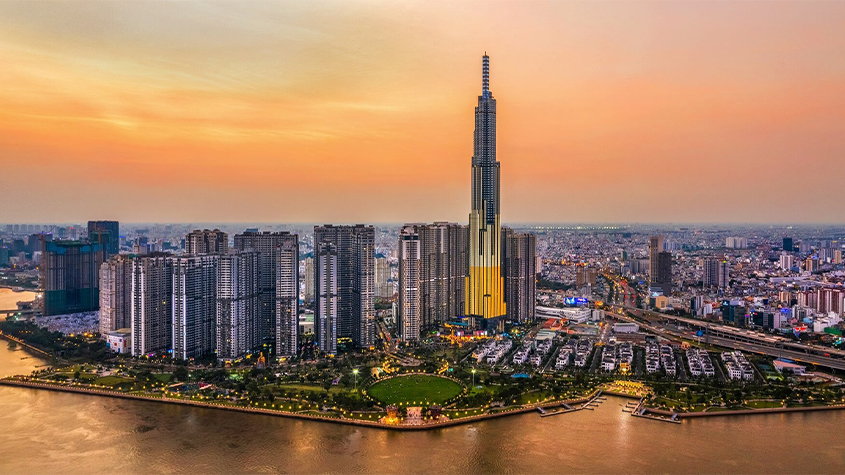
by Vinergy Vietnam | Jun 22, 2024 | Uncategorized
Improving energy efficiency in commercial buildings has become an urgent issue in Vietnam with energy consumption demand rising rapidly. As energy costs account for a significant portion of operational expenses, implementing effective energy-saving solutions will bring considerable economic benefits. Let’s explore 10 ways to improve energy efficiency in commercial buildings in Vietnam in the article below!
State of Energy Waste in Commercial Buildings in Vietnam
The operation of commercial buildings is consuming a large amount of energy, leading to an increase in energy costs in particular and operational costs in general. According to data from Vietnam Electricity (EVN), in recent years, the energy consumption in high-rise buildings in Vietnam accounts for about 35 – 40% of the country’s total energy consumption, higher than the energy consumption of factories. Of which, air conditioning systems account for 40 – 60% of a building’s total energy consumption, lighting systems use about 15 – 20%, office equipment consumes 10 – 15%, and the remaining portion is used by other ancillary equipment. Energy waste not only creates a cost burden but also impacts the environment and energy supply.
According to a United Nations report, CO2 emissions from inefficient energy consumption in commercial buildings reached an unprecedented level of around 10 GtCO2 in 2022, an increase of about 5% compared to 2020 and 2% higher than the previous peak in 2019. This shows the significant impact of inefficient energy consumption in commercial buildings on the global environment.
However, buildings still have great potential for energy savings, especially new buildings constructed according to new energy standards or buildings that have been upgraded to optimize their systems after a period of operation. With the construction of commercial and high-rise residential projects increasing by 6 – 7% annually according to EVN, implementing energy efficiency solutions is crucial to control costs, reduce environmental impact, and ensure sustainable development.

The Importance of Improving Energy Efficiency in Commercial Buildings
Improving energy efficiency plays a crucial role in reducing operational costs and environmental impact of commercial buildings. Decreasing energy consumption allows buildings to achieve significant savings on electricity, fuel, and other utility costs, directly impacting profitability and business efficiency in a positive way. According to the U.S. Environmental Protection Agency, energy-efficient buildings typically use 25-30% less energy than conventional buildings.
Efficient energy use also helps reduce carbon emissions and other pollutants, aligning with sustainable and environmentally friendly development trends. Buildings can enhance their competitive advantage and comply with increasingly stringent environmental regulations by being energy-efficient. Many countries now offer tax incentives or other financial benefits for green, energy-efficient buildings. For example, the United States offers tax deductions for energy-efficient commercial buildings through the Energy Policy Act. Similarly, Canada provides financial incentives like grants and rebates for green buildings through programs like the Green Municipal Fund.
In particular, under The Vietnam Scaling Up Energy Efficiency Project (VSUEE) approved in 2019, industrial enterprises (IEs) and energy service companies (ESCOs) participating in energy efficiency sub-projects will receive a 50% credit guarantee for participating financial institutions (PFIs) in providing loans to the industry. At the same time, it provides funding to build capacity for private enterprises to develop and implement energy efficiency projects.
Moreover, energy-efficient buildings provide a more comfortable and healthy working environment for occupants. Temperature and air quality are better controlled, helping minimize adverse health impacts like headaches and fatigue. Improving indoor environmental quality has been linked to increased employee productivity and performance.
Therefore, developing and implementing solutions to improve energy efficiency should be considered an essential part of the sustainable development and long-term business strategy for investors as well as commercial building management units, especially in Vietnam where energy demand is rapidly increasing.
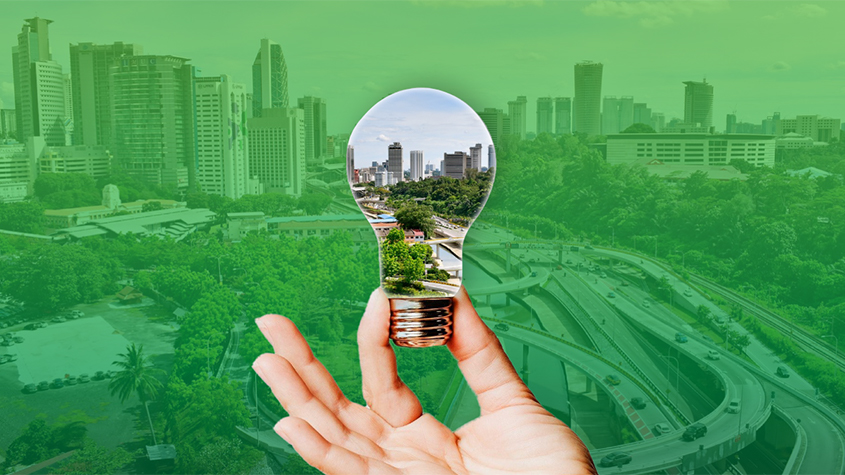
10 Ways to improve Energy Efficiency in Commercial Buildings in Vietnam
1. Conduct Energy Audits
The U.S. Environmental Protection Agency (EPA) states that around 30% of the energy consumed in commercial buildings is wasted due to various inefficiencies, like faulty electrical wires, incandescent light fixtures, refrigerant leaks, and more. According to data from the Ministry of Construction of Vietnam, approximately 40% of the total energy consumption in an urban area is energy supplied to construction projects, with high-rise buildings having the highest energy consumption index. So, the first step towards improving energy efficiency is to understand where and how energy is being consumed in a building. Professional energy audits can identify areas of inefficiency and provide recommendations for improvement.
At Vinergy, we offer a comprehensive Energy Audit solution to assist enterprises in identifying inefficiencies and unlocking opportunities to enhance energy performance within their commercial buildings. A key capability is mapping power distribution channels and identifying equipment consumption clusters to provide an installation diagram for the strategic placement of monitoring assets. With in-depth analysis of energy usage patterns and building systems, our audits can pinpoint areas with potential for savings and recommend cost-effective efficiency measures tailored to each facility’s unique needs.
2. Upgrade Lighting Systems
Lighting fixtures are an essential necessity in commercial buildings, but they can also contribute to significant energy waste. For building owners and occupants, replacing inefficient incandescent bulbs with LED lights presents an immediate and cost-effective solution to reduce energy consumption and save on utility bills. According to a study by the U.S. Department of Energy, LED lights use at least 75% less energy than conventional incandescent bulbs.
Beyond their energy-saving capabilities, LED lights offer additional advantages. They emit considerably less heat than incandescent bulbs, which can help lower air conditioning costs and reduce cooling loads within the building. LED lights also provide brighter, more uniform illumination, contributing to improved occupant comfort and potentially boosting employee productivity.
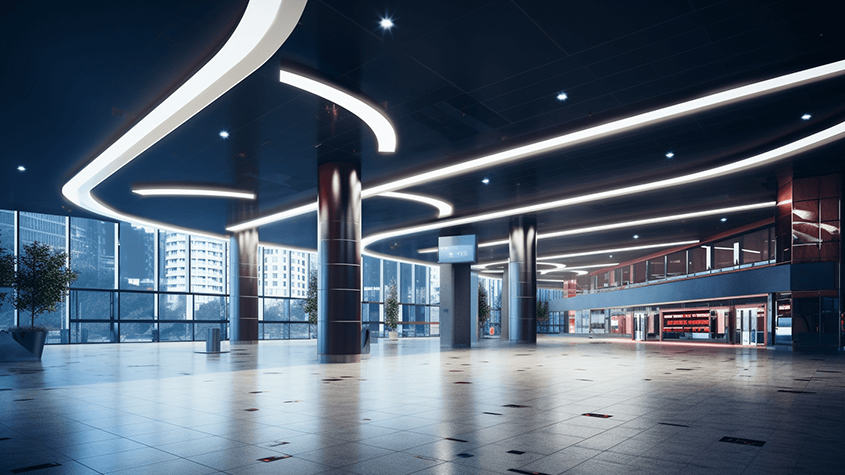
3. Optimize HVAC Systems
According to statistics from the Ho Chi Minh City Energy Conservation Center, for office buildings serving as administrative headquarters, the equipment that consumes the most energy is air conditioning, accounting for over 70% of total energy use. Therefore, it can be said that HVAC is one of the highest energy-consuming areas in a building.
According to the International Energy Agency (IEA), optimizing the HVAC system can help save 20% to 40% of the energy used for cooling and heating. Optimizing and properly maintaining the system can lead to significant energy and cost savings, for example by installing high-efficiency heating and cooling systems, such as condensing boilers, heat pumps, or variable refrigerant flow (VRF) systems.
4. Improve Insulation
Poor insulation leads to increased demand for HVAC usage to maintain indoor temperatures. According to research by the Vietnam Energy Institute, proper insulation for walls and roofs can help reduce the need for air conditioning by 20% to 30%, resulting in significant energy savings. The Ministry of Construction estimates that improved insulation measures can help reduce a building’s total energy costs by 5% to 10%. Insulating materials that can help save heating and cooling costs include house wraps and sealed coating. Insulation work in existing buildings is not just for walls; windows, doors, and roofs also need to be sealed to prevent air leakage.
5. Utilize Daylight
Utilizing natural daylight from the sun through proper window design and placement helps reduce the need for artificial lighting and saves energy. Studies have shown that increasing natural light can decrease the demand for artificial lighting by around 16 – 20% (Velux, 2018). According to the Vietnam Green Building Council (VGBC), in most constructions that incorporate natural daylighting systems, the overall energy savings range from 15 – 40%. Furthermore, office high-rises have recorded energy savings from using natural light ranging from 20 – 60%.
6. Buy Energy Certified Equipment
For owners of commercial buildings, transitioning to energy-efficient systems presents an opportunity to dramatically reduce heating and cooling expenditures. The Energy Star certification program, endorsed by the Department of Energy, serves as a reliable guide for identifying trusted, energy-saving equipment and appliances on the market. Spanning from computers to HVAC systems, Energy Star certified products consume between 30% and 65% less energy compared to their non-certified counterparts.
7. Pursue Green Building Certifications
Green building certification programs like LEED and EDGE have stringent standards for energy efficiency and minimizing environmental impact. According to the U.S. Green Building Council, LEED-certified projects divert over 80 million tons of waste away from landfills. The U.S. General Services Administration states that LEED Gold buildings in their portfolio consume 25% less energy and produce 34% fewer greenhouse gas emissions compared to the national average.
While achieving compliance can increase upfront costs for construction and renovations, LEED offers excellent opportunities for long-term cost savings. Utilizing LEED’s energy benchmarks for mechanical systems and energy conservation allows you to recoup your investment within just a few years through reduced utility expenditures.
8. Utilize Renewable Energy Sources
Integrating renewable energy sources such as solar and wind power into a building’s system is an effective solution to reduce dependence on the national grid and traditional fossil fuels. According to energy experts, installing rooftop solar systems can meet a considerable portion of the energy needs of a commercial building. The Vietnam Energy Institute also estimates that small-scale wind turbines can provide a certain amount of electricity when wind conditions are favorable.
In addition to the positive environmental impact of reducing carbon emissions and air pollutants, using renewable energy helps create a sustainable, safe, and reliable energy source for the building’s operations, while also reducing long-term energy costs.
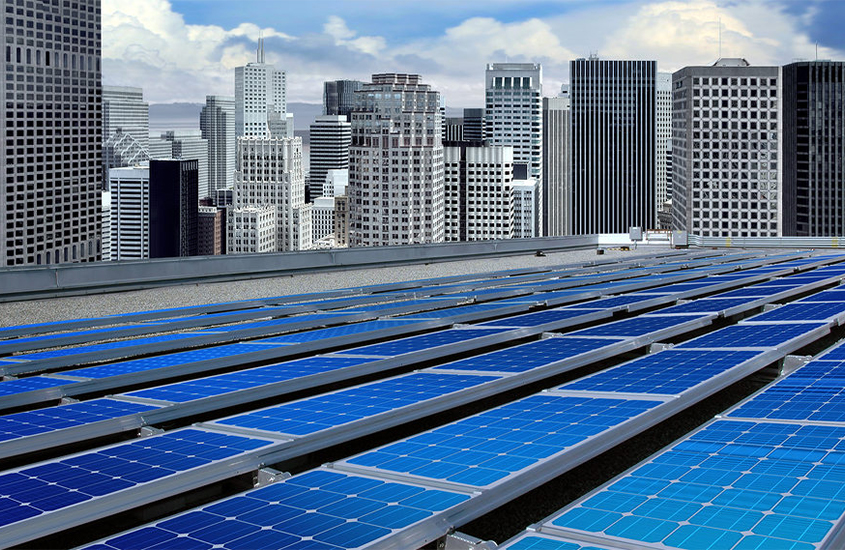
9. Regularly Maintain and Upgrade equipment
Regular maintenance and upgrading of equipment is absolutely necessary. Periodic maintenance of equipment such as air conditioning systems, generators, and lighting fixtures helps ensure they operate efficiently, avoiding energy waste. According to the report “Improving Energy Efficiency in Commercial Buildings in Vietnam” by the Vietnam Energy Institute in 2021, periodic maintenance of air conditioning systems can help save 10 – 15% of energy consumption.
10. Implement Energy Monitoring and Management Systems
For commercial buildings, controlling and optimizing energy usage is a crucial issue to save operational costs while contributing to environmental protection. Implementing an Energy Monitoring System(EMS) is a comprehensive solution that allows you to monitor, control, and optimize energy usage throughout the entire building through automation and intelligent control.
With the support of Vinergy, you will enjoy practical benefits such as the installation of sensors, meters, and real-time energy data analysis software; automated control of air conditioning systems with a team of experts providing strategic consultation on energy-saving optimization; and periodic evaluations of energy efficiency. Contact Vinergy now for a free consultation on the most suitable solution for your building!

by Vinergy Vietnam | May 19, 2024 | Uncategorized
Energy efficiency in the Hospitality Industry has become a top priority in recent years as they aim to reduce operating costs, minimise environmental impact, and meet guest expectations for sustainable practices. This trend is primarily motivated by increasing awareness of environmental concerns and a collective aspiration to contribute to sustainability efforts.
Drivers of Energy Efficiency Adoption in Hospitality
The adoption of energy efficiency in hospitality is influenced by several drivers, including:
1. Rising energy emissions
The operations of the hospitality sector frequently have a significant environmental impact, involving considerable energy usage, water consumption, and waste production. According to the Sustainable Hospitality Alliance, hotels alone contribute to around 1% of the world’s carbon dioxide emissions. Hotels accounted for approximately 363 million tons of the 36.3 billion tons of carbon dioxide emitted globally in 2021, roughly equivalent to the annual energy consumption of approximately 45.7 million homes, according to IEA analysis.
In Vietnam, as the demand for hotel services continues to surge, the hospitality industry has emerged as a significant consumer of energy, water, and other natural resources. Transitioning this sector towards environmentally sustainable practices is not merely a strategic business decision or a matter of economic calculations; it is an imperative necessity to protect future generations from the catastrophic consequences of flooding and climate change. Alarming estimates from the Vietnam Ministry of Natural Resources and Environment in 2020 indicate that a staggering 50% of the Mekong Delta region is vulnerable to flooding, while a concerning 17.2% of Ho Chi Minh City’s area faces the risk of inundation. With the hospitality industry contributing a substantial 5% to global CO2 emissions, this sector bears a profound responsibility to implement robust measures that curb global warming and mitigate the escalating climate crisis. Failure to act decisively could have devastating implications for Vietnam’s future.
As awareness about climate change and dwindling resources increases, stakeholders in the hospitality industry are increasingly acknowledging the pressing necessity to embrace sustainable practices. Adopting energy efficiency and eco-friendly practices yields dividends that extend beyond environmental preservation, concurrently unlocking substantial cost-saving opportunities over the long run. By seamlessly integrating strategies such as energy-efficient illumination solutions, water conservation systems, and waste reduction initiatives, hotels can curtail operational expenditures while simultaneously minimising their ecological footprint.
2. Environmental consciousness
Over the years, there has been a growing trend among travellers to choose sustainable hotels and resorts. Travellers are now better informed and discerning, often seeking accommodations that reflect their commitment to environmental preservation.
According to a study conducted by Booking.com, a prominent online travel agency, in 2023 76% of travellers expressed a greater inclination to book a hotel with a green certification. Additionally, the research found that 43% of travellers are willing to pay more for accommodations that prioritise sustainability. This deliberate decision-making underscores a shift towards sustainability that is reshaping the hospitality industry.

3. Regulatory pressures
Investors are increasingly integrating environmental, social, and governance (ESG) criteria into their decision-making processes, prompting businesses to prioritise sustainability efforts.
Furthermore, companies with strong sustainability initiatives are in a better position to navigate regulatory challenges and ensure compliance with laws. The hospitality industry, like many others, is confronted with an increasing wave of environmental regulations and standards aimed at achieving net-zero emissions. Embracing environmentally friendly practices not only aligns the Hospitality Industry with these evolving regulations but also protects it from potential penalties.
Consequently, the Hospitality Sector is embracing energy-efficient technologies and strategies at an accelerating pace to remain competitive and future-proof their operations.
The Influence of Energy Efficiency on Guest Satisfaction
Within the Hospitality Industry, energy efficiency extends far beyond a buzzword; it represents a pivotal element that substantially sways guest satisfaction. When hotels prioritise sustainable practices and channel resources into energy-saving measures, they not only contribute to the mitigation of carbon emissions but also elevate the overall guest experience to new heights.
Implementing energy management systems in hospitality environments guarantees guests a personalised and comfortable experience while minimising unnecessary energy usage. For example, adjusting smart HVAC systems and lighting controls based on occupancy and preferences ensures that rooms maintain optimal temperature and lighting levels at all times. This meticulous attention to detail not only curbs energy consumption within the hospitality realm but also leaves a durable impression on guests. It serves as a catalyst for crafting memorable and sustainable experiences, increasing the likelihood of guests returning or recommending the hotel to others.
At its core, by placing a coordinated emphasis on energy efficiency, hotels can attain a mutually beneficial outcome: catalysing sustainability initiatives while concurrently amplifying guest contentment.

3 Easy Steps to Jumpstart Your Hotel’s Energy Savings
Starting the quest for energy efficiency savings in the hospitality sector doesn’t have to be intimidating. By implementing a few straightforward measures, your hotel can greatly diminish energy usage and set the stage for a more sustainable future. Let’s take a look at the following 3 steps:
- First and foremost, contemplate performing an energy assessment. This step will pinpoint areas of energy wastage and reveal avenues for enhancement. Subsequently, an investment in energy-efficient appliances and lighting can yield significant benefits. For instance, LED lights not only use less energy but also have an extended lifespan, resulting in reduced energy expenses and maintenance.
- Another effective step is to adopt smart technology. For example, an Energy Management System (EMS) can automatically regulate heating, ventilation, air conditioning (HVAC) and lighting according to occupancy levels, significantly reducing energy consumption while maintaining guest comfort. Integrating an Energy Management System in the hospitality sector can also offer real-time data and insights, enabling better-informed decisions regarding energy utilisation.
- Involving your guests and employees in your sustainability initiatives is also a crucial step. Basic initiatives such as promoting the reuse of towels and linens among guests can lead to substantial energy savings in the hospitality sector by decreasing the need for frequent laundry cycles.
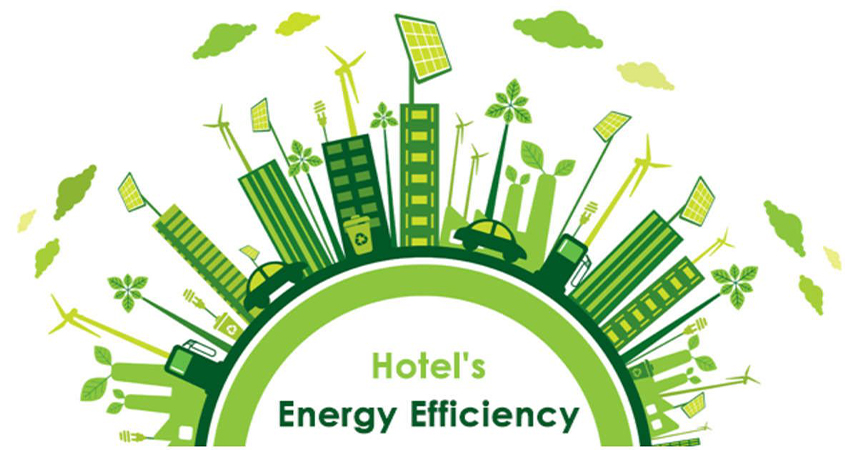
Energy Efficiency: An Intelligent Solution in the Hospitality Industry
As we gaze into the future of Hospitality, it becomes evident that sustainability, efficiency, and a guest-centric approach are not merely passing fads but crucial elements that will shape the industry’s landscape. At Vinergy, we recognize that the road to a sustainable future in hospitality is built upon the foundation of Energy Efficiency.
Pioneering energy management in the Hospitality Sector plays a pivotal role in driving this transformative shift. By leveraging smart technologies and its IoT SaaS platform, Vinergy stands ready to accompany you on the journey to monitor and conserve energy consumption, delivering a highly personalized and comfortable experience for guests, all while achieving a substantial reduction in environmental impact.
Vinergy’s platform and services metamorphose a hotel into a more intelligent, eco-friendly and efficient operation, simultaneously enriching the guest experience and augmenting energy efficiency. It goes beyond just conserving energy; it enhances the overall hotel experience. Don’t hesitate to get in touch with us; we’re always here to assist you!
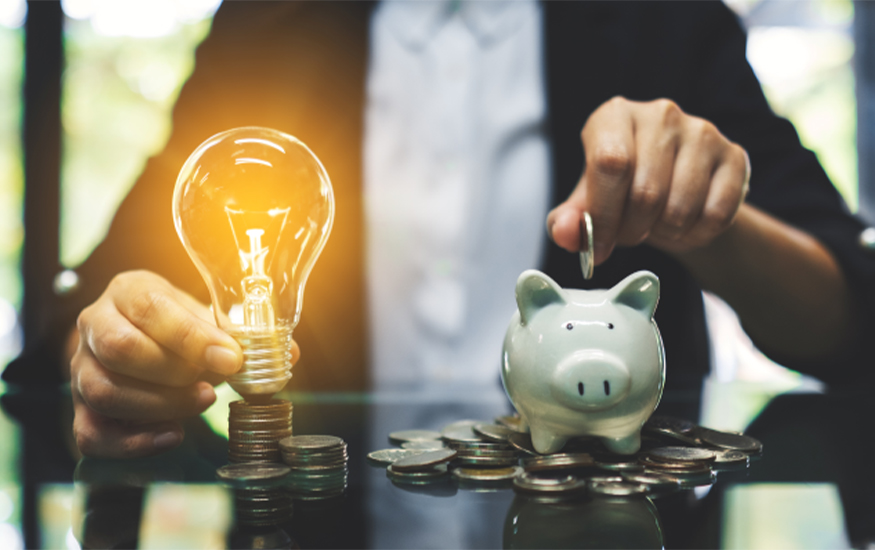
by Vinergy Vietnam | May 15, 2024 | Uncategorized
Are you struggling to keep your business’s energy costs under control? As energy prices continue to soar, monitoring and managing your organization’s energy consumption has become more crucial than ever. Failing to address inefficiencies can lead to skyrocketing utility bills, decreased profitability, and a larger carbon footprint. So why is energy monitoring important for Vietnam’s business? It’s the key to unlocking sustainable cost savings and environmental responsibility for businesses of all sizes.
What is Energy Monitoring?
Energy monitoring is the process of tracking and analyzing a facility’s energy usage over time. It involves collecting real-time data from various sources such as utility meters, sub-meters and a variety of sensors to provide detailed insights into energy consumption patterns. This data can be visualized through dashboards and reports, enabling businesses to identify areas of inefficiency, monitor trends, and make informed decisions about energy management.
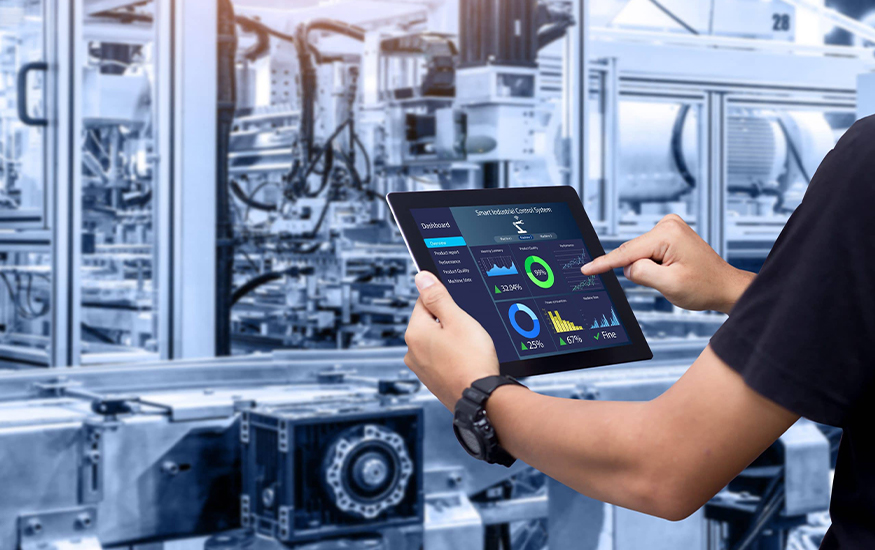
Why is Energy Monitoring important?
Energy monitoring is crucial for businesses for several reasons:
1. Cost Savings
One of the primary benefits of energy monitoring is the potential for significant cost savings. As per the Carbon Trust, a 20% reduction in energy costs can yield equivalent bottom-line benefits to a 5% increase in sales for numerous businesses, underscoring the significance of monitoring energy usage. Additionally, data from the U.S. Department of Energy suggests that implementing energy-efficient practices can reduce energy costs by up to 30% for commercial buildings. Establishing an energy monitoring system proves invaluable in detecting any avoidable expenditures.
Energy monitoring systems enable informed decision-making regarding equipment upgrades and the optimization of heating and cooling systems to enhance building efficiency. Through continuous energy monitoring usage and the establishment of consumption targets, data from these systems empowers organizations to make data-driven choices, ultimately leading to reduced energy expenses and improved financial outcomes.
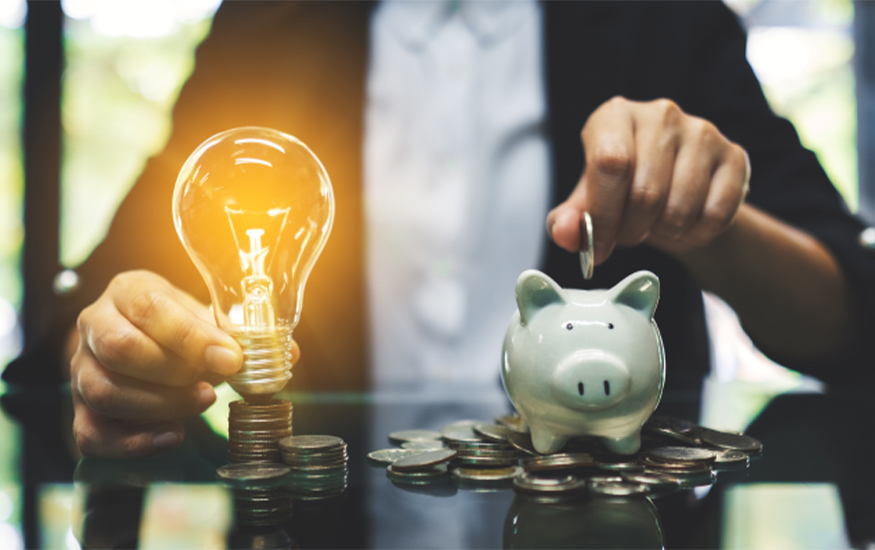
2. Real-Time Energy Data
According to a report by the U.S. Department of Energy, real-time energy monitoring can lead to improvements in equipment reliability, reducing maintenance costs and downtime.
With real-time energy data at your disposal, businesses gain the ability to identify patterns of abnormal consumption. A real-time alert can be configured to enable immediate action, as opposed to discovering the issue the next day after the heating or lighting had been left on overnight, wasting money and energy unnecessarily. Moreover, energy monitoring can also detect and flag water leaks, which, according to data from Ofwat, if left undetected, could result in a significant financial burden for businesses.
3. Environmental Responsibility
Beyond reducing expenses, energy monitoring systems also aid environmental initiatives and lessen the ecological footprint of buildings. According to the International Energy Agency (IEA), global energy-related CO2 emissions reached a record high of 33.5 gigatons in 2021, with buildings accounting for around 28% of these emissions. Moreover, a study by the American Council for an Energy-Efficient Economy (ACEEE) found that energy monitoring and management in commercial buildings can reduce greenhouse gas emissions by up to 30%.
Businesses can dramatically decrease their carbon emissions by pinpointing areas of energy waste and enacting efficiency measures. This not only aligns with ESG objectives, but also enhances the business’s public reputation and brand perception. Energy monitoring platforms supply vital data to quantify and report enhancements in energy efficiency, allowing organizations to demonstrate their dedication to environmental sustainability. Through tracking energy use and uncovering opportunities for progress, companies can take concrete action toward a more eco-friendly future.
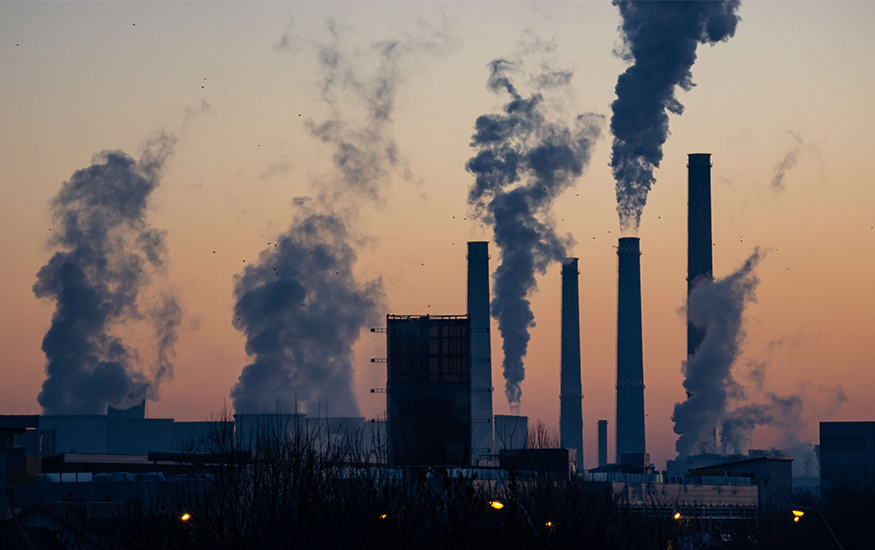
4. Regulatory Compliance
In the U.S., the Energy Policy Act of 2005 requires federal buildings to implement energy monitoring and management practices. The European Union’s Energy Efficiency Directive (EED) mandates that large companies conduct energy audits at least every four years and report their energy consumption data. Energy monitoring helps businesses comply with these requirements and avoid costly penalties.
How can businesses improve energy efficiency?
Becoming energy efficient is an increasingly pressing matter, as energy prices in 2025 are expected to be much higher than they are currently (Direct Business Solutions, 2024), and with the government introducing carbon reduction goals, many companies are feeling the urgency to swiftly enhance their energy efficiency. According to a report by Eco Monitor, the latest Business Energy Index (nBEI) revealed that nearly a quarter of businesses globally were unaware if they had reduced their energy consumption over the past 12 months, highlighting the lack of proper energy monitoring practices in place.
Here are some suggestions we have for improving the energy efficiency of your business:
1. Energy Monitoring
The initial step towards enhancing energy efficiency is the implementation of an energy monitoring solution. After all, it’s challenging to address issues that remain invisible. A robust monitoring system provides comprehensive insights into your current operations and allows you to benchmark your energy consumption. This serves as a valuable tool for identifying areas with the most significant potential for efficiency gains. By deploying monitoring technology, you can pinpoint various inefficiencies, such as unnecessary lighting usage even in well-lit environments. This not only facilitates cost savings but also contributes to a more sustainable and environmentally conscious operation.
2. Insulation and Air Sealing
Heating and cooling systems are major energy consumers, so making your building as airtight and well-insulated as possible is crucial to reduce this demand.
- Invest in high-performance insulation materials and ensure proper installation in walls, ceilings, attics, and crawl spaces to minimize heat transfer.
- Identify and seal air leaks around windows, doors, electrical outlets, and other openings using caulk, weather stripping, or expanding foam sealants, as air leaks can account for significant energy losses.
- Replace old, single-pane windows and doors with energy-efficient, double or triple-glazed units, as statistics show up to 71% of heat can enter and 48% of heating can escape through poorly insulated windows.
- Consider advanced wall systems like insulated concrete forms (ICFs) or structural insulated panels (SIPs), which offer superior insulation and airtightness compared to traditional construction methods.
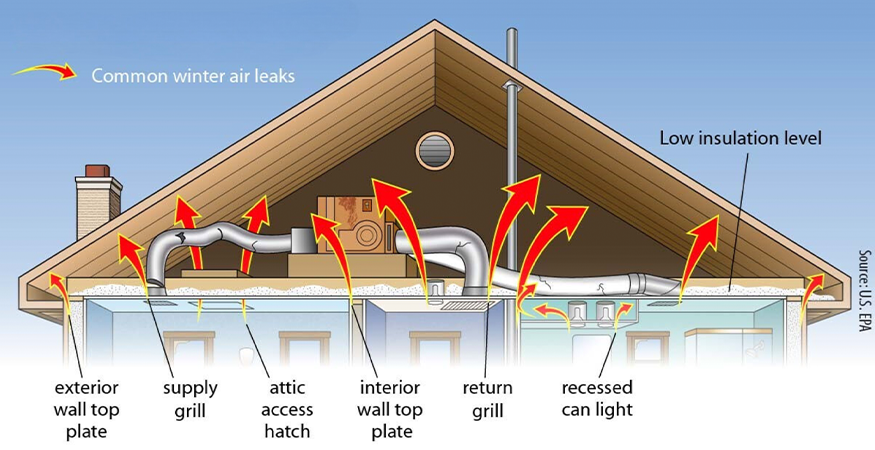
3. Equipment Upgrades
Replace aging or inefficient equipment with energy-efficient alternatives:
- LED Lighting: LED bulbs consume up to 90% less energy than incandescent bulbs and have a longer lifespan, reducing maintenance costs.
- High-Efficiency HVAC: Upgrade to Energy Star certified HVAC systems with features like variable speed drives, advanced controls, and improved insulation for optimal efficiency.
- Smart Controls: Implement smart controls and automation for lighting, HVAC, and other systems to optimize operations based on occupancy, schedules, and real-time conditions.
- Other manufacturing equipments
4. Leverage Smart Energy Solutions
After you have made adjustments to your building to make it as energy efficient as possible, you can integrate advanced technologies such as an energy monitoring and control platform to further enhance efficiency and savings. At Vinergy, we offer real-time energy monitoring, automation capabilities and actionable insights to optimize energy usage, reduce waste and achieve substantial cost savings. With our solutions, businesses can easily track, control, and optimize their energy consumption from a single platform, unlocking sustainable cost savings and environmental benefits.
To learn more about Vinergy’s innovative offerings and how we can take your company to the next level in saving energy, get in touch with us for a consultation.


















